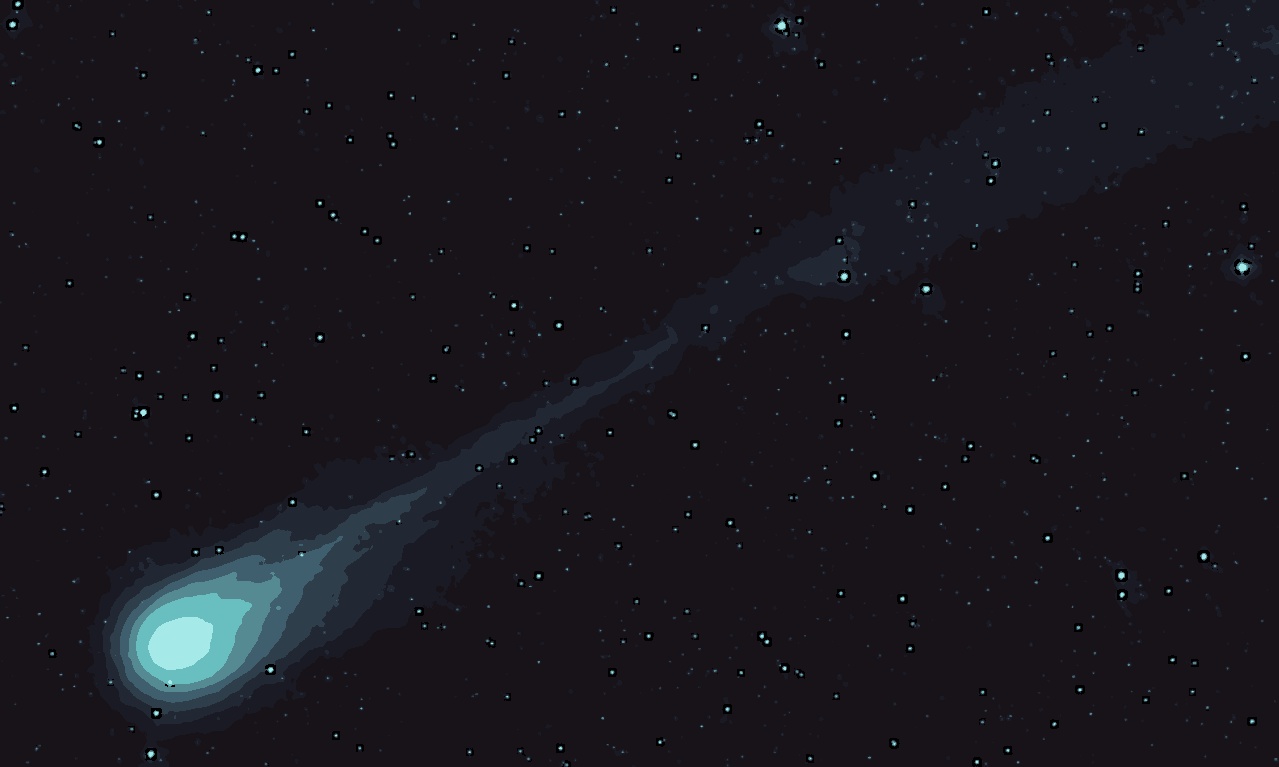In the coming days, astronomy aficionados will have the chance to spot one of the brightest comets recognized by the scientific community. This is because the 12P/Pons-Brooks becomes visible in the night sky.
Currently, the Devil’s Comet, as they popularly call it, is approaching Earth (without presenting a risk of collision). Thus, it can be seen in some regions of the Northern Hemisphere with the help of instruments.
Discovered in 1812 by French astronomer Jean-Louis Pons, 12P/Pons-Brooks earned its “diabolical” nickname due to an explosion that occurred in July 2023. As a result, it deformed its coma, the cloud of dust and gas that surrounds its core. , taking the form of horns.
The comet is gradually becoming brighter for observation, currently at a magnitude of 5.0 (the lower the number, the brighter the object), even surpassing the brightness of the planet Uranus in our Solar System.
However, in countries in the Southern Hemisphere, such as Brazil, the comet will only become visible around April 19th or 20th.
During this period, it will reach its maximum brightness, reaching a magnitude of 3.0, as indicated by specialized measurement platforms.
This means it will be visible to the naked eye or with binoculars, although its proximity to the Sun in the sky can make it difficult to observe, especially in urban areas with light pollution, such as São Paulo.
To locate 12P/Pons-Brooks in the sky, mobile stargazing apps such as Star Walk 2 or Sky Tonight can be useful, allowing you to identify various astronomical objects, including comets.
Comets are celestial bodies with the formation of dust and ice that orbit the Sun.
In addition to the Devil’s Comet, check out more comets that can be seen this year
- C/2021 S3 (PANSTARRS): visible from January to June, with maximum brightness in March, observable with binoculars in dark skies during the early hours of the morning.
- C/2023 A3 (Tsuchinschan-ATLAS): visible from September to November, with maximum brightness in October, observable in the late morning (early October) and early evening (late October) with binoculars.
- 12P/Pons-Brooks (or Devil’s Comet): visible from February to June, with maximum brightness in April, observable with binoculars in the early evening.
- 13P/Olbers: visible from June to August, with maximum brightness in July, observable with binoculars in the early evening.
- 62P/ Tsuchinschan 1: visible from January to March, with maximum brightness in January, observable with binoculars during the early hours of the morning.
- 144P/Kushida: visible from January to February, with maximum brightness in January, observable with small telescopes in dark skies in the early evening.
Source: Atrevida
Earl Johnson is a music writer at Gossipify, known for his in-depth analysis and unique perspective on the industry. A graduate of USC with a degree in Music, he brings years of experience and passion to his writing. He covers the latest releases and trends, always on the lookout for the next big thing in music.





![New Day ahead: What awaits you in the 15 Episode of Friday July 18, 2025 [SPOILERS] New Day ahead: What awaits you in the 15 Episode of Friday July 18, 2025 [SPOILERS]](https://fr.web.img6.acsta.net/img/be/e7/bee7c3880c14c02baf6e832fe76e123a.jpg)


